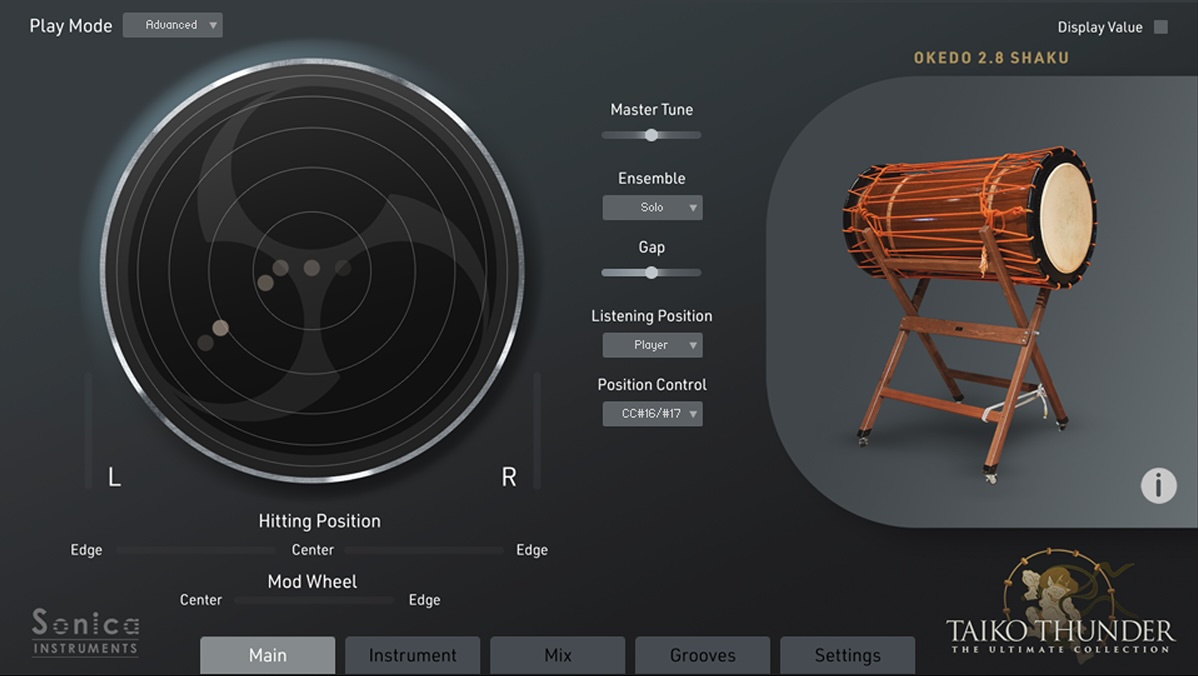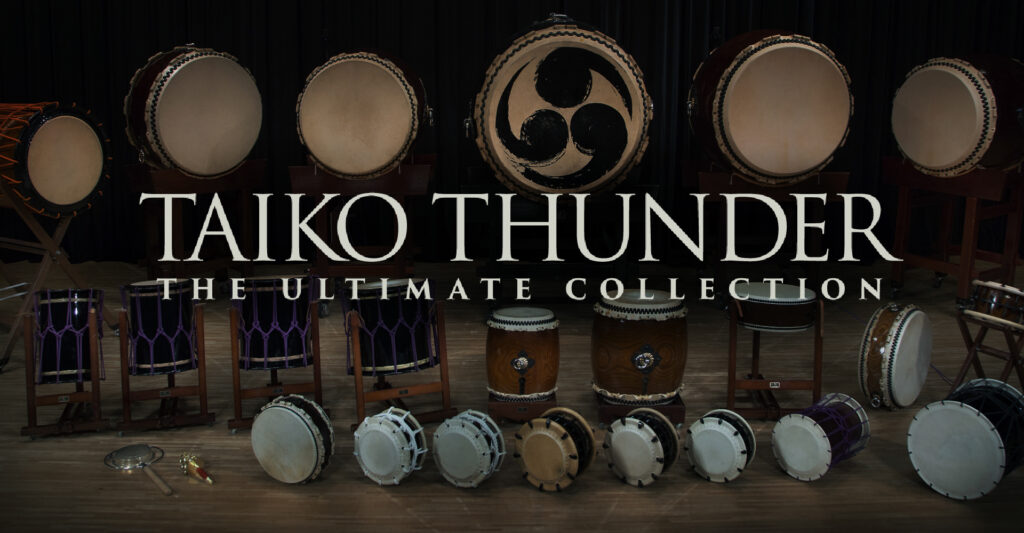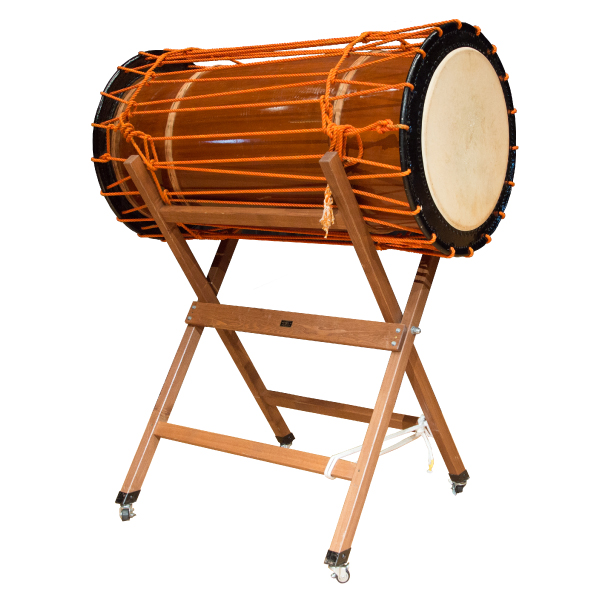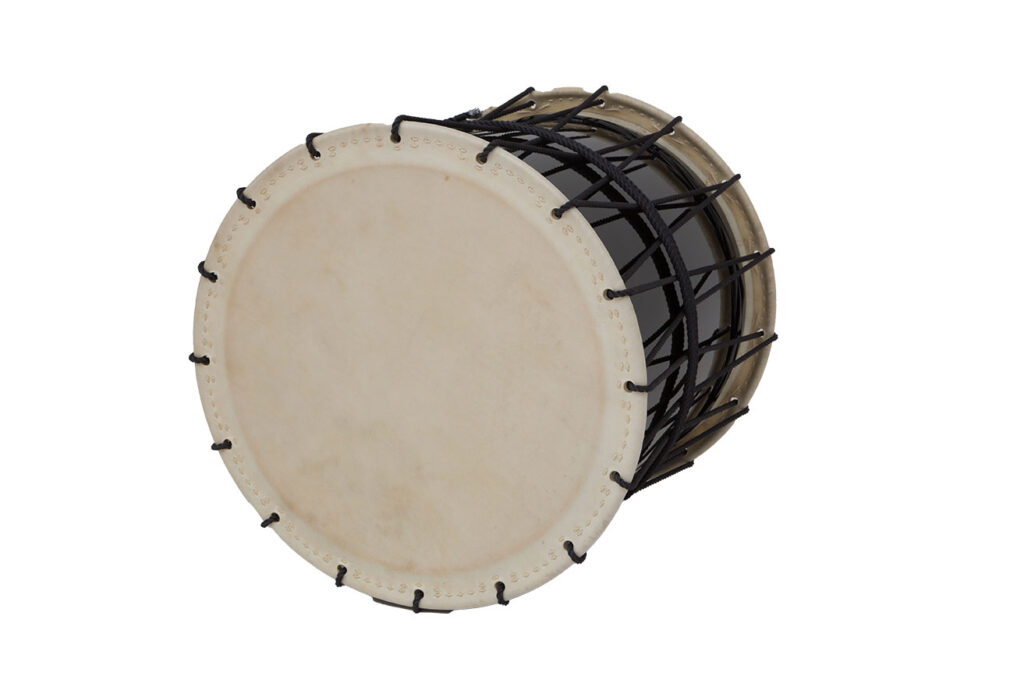
Know Your Taiko: Meet the Instruments That Define a Tradition — Part 3: Okedo-daiko
In this third installment of our blog on the taiko instruments in TAIKO THUNDER: The Ultimate Collection, we look at the okedo-daiko.

$695
TAIKO THUNDER: The Ultimate Collection is, in essence, 20 separate sound libraries — consisting of 16 taiko instruments and four percussion instruments — that cover all taiko sounds necessary for modern music making.
The collection features realistic sound variations from different hitting positions, special tone-shaping parameters for finding the perfect sound, and as many as seven separate mic channels with individual controls including hall reverb. All these features add up to a next-generation taiko library for every musical situation.
Okedo-daiko

The okedo-daiko is made of long, slender planks of wood joined together like a tub. The body and drumheads are fastened together with cords, and the drum’s pitch can be tuned by adjusting the tension of the cords.
In addition to the wide range of sounds available through different tunings, the okedo-daiko offers a high degree of flexibility in sounds and performance styles, through such innovations as combining various sizes of drums.
The library includes an okedo-daiko with a diameter of about 84 cm (2 shaku 8 sun in traditional units) and a body length of about 90 cm (5 shaku).
Katsugi Okedo

The katsugi okedo-daiko is a okedo-daiko played while wearing a shoulder strap.
Because the performer can move around freely while playing, the katsugi okedo-daiko is an essential drum for the modern stage, given its superior performance and visual impact. Many performing groups today incorporate the katsugi okedo-daiko into their music.
Unique to the katsugi okedo-daiko is a particular technique, called ryomen-uchi, in which the drummer shifts the position of the drum while playing and strikes both drumheads with two bachi.
The library includes two katsugi okedo sizes: 42 cm (1 shaku 4 sun in traditional units) and 51 cm (1 shaku 7 sun).
Okedo Eitetsu

Eitetsu Hayashi, who participated in the founding of the taiko groups Ondekoza and Kodo, both from Sado Island, and who pioneered new possibilities for Japanese percussion, conceived of the okedo eitetsu-daiko.
A revamping of the okedo-daiko for stage performances, the okedo eitetsu-daiko is characterized by a smaller ratio between the drumhead diameter and the body length compared to a regular okedo-daiko. The drum’s tuning can be changed by adjusting the tension of the cords.
The library includes an okedo eitetsu with a diameter of about 54 cm (1 shaku 8 sun in traditional units).
